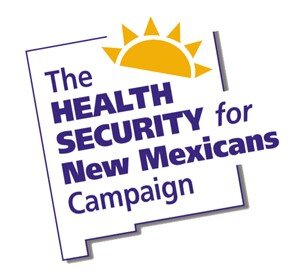Studies & Analysis
There have now been three studies regarding the Health Security Plan: the Lewin analysis in 1994, the Mathematica analysis in 2007, and the KNG analysis in 2020.
The conclusion? The Health Security Plan would cost less than the current system and would ensure that everyone in New Mexico has health care coverage. That’s why we’re moving ahead with designing the details of the Health Security approach.
For the latest on the Health Security Plan design process, visit our Design Process page.
KNG Fiscal Analysis of the Health Security Plan (2020)
In early 2019, the New Mexico Legislature set aside funding to undertake a fiscal analysis of the Health Security Plan. The Legislative Finance Committee contracted with KNG Health Consulting, LLC, to complete the analysis, and a final report was produced in summer 2020.
KNG’s Final Report confirms what two prior New Mexico studies found: that the Health Security Plan would guarantee universal health care coverage and control rising health care costs.
Top 4 Takeaways from the Final Report
1. The Health Security Plan leads to universal coverage.
KNG found that the Health Security Plan “would create near-universal coverage in the state,” reducing the percentage of uninsured to near zero. (KNG Final Report, p. 45)
2. The Health Security Plan costs less than the current system.
The report states: “Over our five-year projection window, the HSP [Health Security Plan] is projected to reduce health care spending in the state” (KNG Final Report, p. 48), with savings over the five-year period estimated at $1.6 billion to $2.7 billion, depending on the scenario. (KNG created four options, or scenarios, for the Health Security Plan, each with different underlying assumptions.)
3. The Health Security Plan controls rising health care costs.
KNG's data shows that the growth rate for health care costs would be substantially less under all four Health Security scenarios than what is projected under the current system. (Even in countries with universal coverage, health care costs are expected to continue to increase each year.)
4. “In some scenarios, the HSP [Health Security Plan] may be funded through existing revenue, while in other cases there may be a funding shortfall.” (KNG Final Report, p. vii)
In fact, the fourth scenario produces a funding surplus. It provides a clear pathway to a viable funding approach. In the other three scenarios, the shortfalls decrease each year. (New programs generally cost more at the beginning, so this is not surprising.)
Reasons why, according to KNG, the Health Security Plan reduces rising health care costs:
Reduced administrative costs for the state when merging Medicaid, state employees, and the health insurance exchange programs into the Health Security Plan
Lower drug costs through bulk purchasing
Billing and insurance administrative cost reductions for hospitals and providers
Stable revenues for hospitals through global budgets, enabling them to invest in better systems of care
Additional positive impacts noted by KNG but not included in the four scenario estimates:
Lower workers compensation and automobile insurance premiums – a boon to businesses, employees, and consumers
More jobs due to direct health care spending (more medical providers) and indirect health care spending (suppliers of goods and services to providers)
Over a 10-year period, the Health Security Plan, which focuses on prevention and patient-centered care, will result in a healthier population and increased productivity
Clearly, the Health Security Plan is worth investing in! As all three New Mexico studies have found, the Health Security Plan would cost less than the current system and would ensure that everyone in New Mexico has health care coverage.
Sources: Fiscal Analysis of New Mexico’s Health Security Plan: Final Report (KNG Health Consulting, June 30, 2020) and Fiscal Analysis of New Mexico’s Health Security Plan: Technical Supplement (KNG Health Consulting, July 15, 2020)
Mathematica Health Reform Comparison Study (2007)
In fall 2006, Governor Bill Richardson’s Health Coverage for New Mexicans Committee commissioned a study of three health care reform models. Two of the models were based on the private insurance system, and the third was based on the Health Security Plan. The study, performed by Mathematica Policy Research, Inc., concluded that only the Health Security Plan would save money. The other proposals all cost more than the current system even when projections were made over a five-year period.
Mathematica Final Report (July 2007)
Lewin Health Reform Comparison Study (1994)
The Lewin-VHI, Inc., study of 1994, which focused on New Mexico, found that covering all or most residents of a state under one health risk pool would result in hundreds of millions of dollars, if not billions of dollars, in savings over time. Numerous other studies from around the country have concluded the same thing.
Lewin Final Report (November 1994)
Lewin Appendices (November 1994)
If you’re really interested in fiscal analyses, you might also want to check out the Legislative Finance Committee’s virtual library containing information on the Health Security Plan as well as studies on other statewide health coverage proposals.

